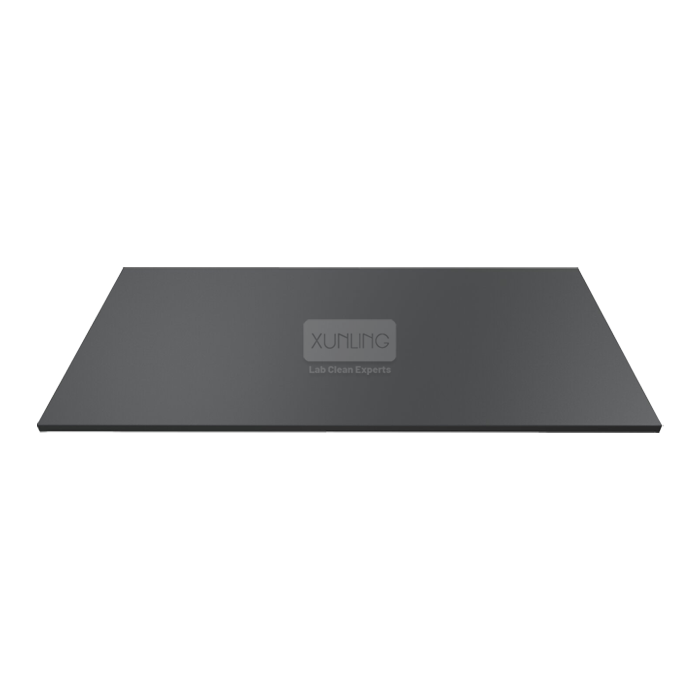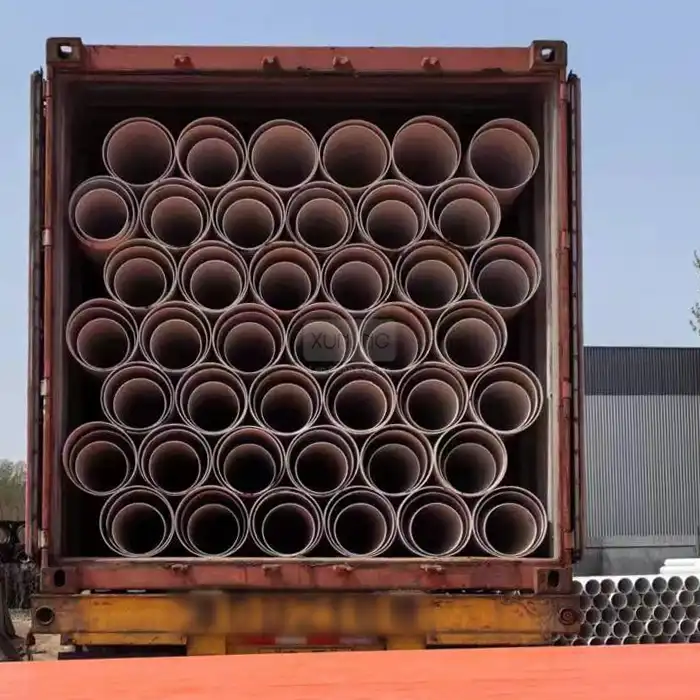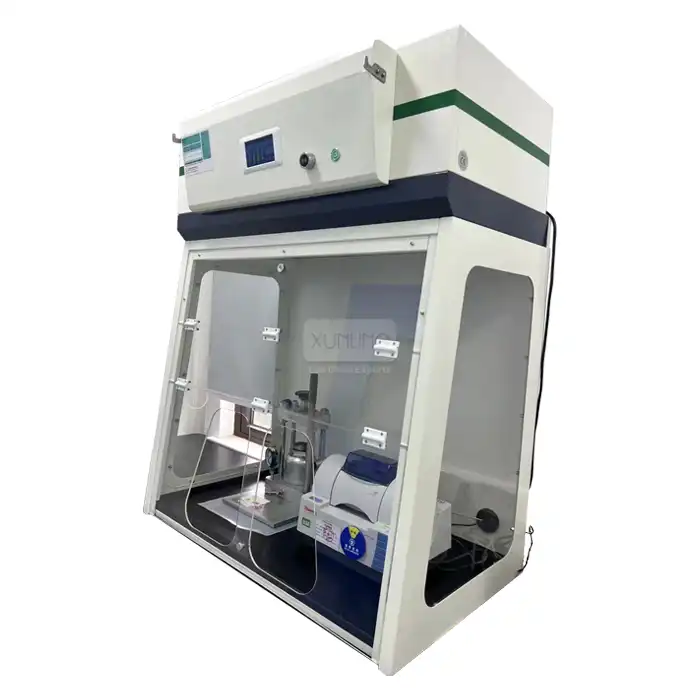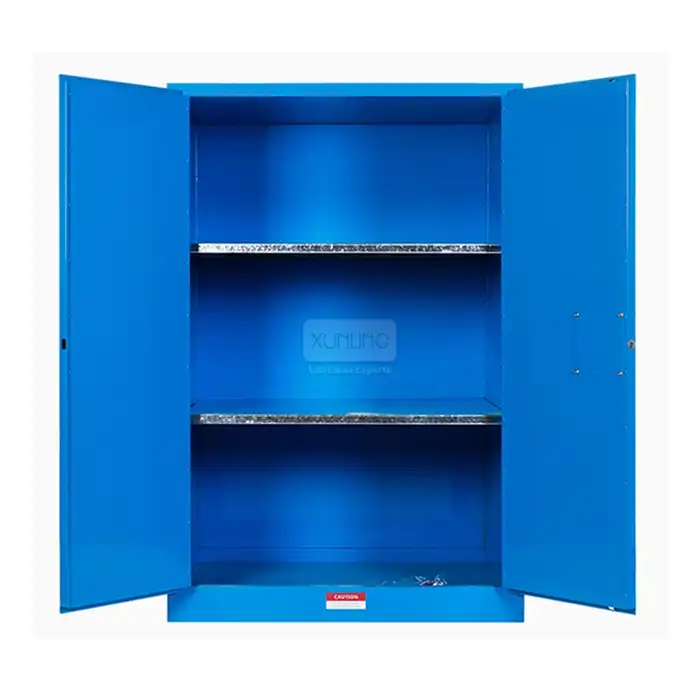
2025 Guide: Best Recirculating Fume Hood for Small Laboratories
2025-08-15 16:09:54
Small laboratories face unique challenges when it comes to maintaining safe working environments while managing space constraints and budget limitations. A Recirculating Fume Hood, also known as a Ductless Fume Hood, is designed to filter and recirculate air back into the laboratory, making it an ideal solution for compact research facilities. This comprehensive guide explores the best Recirculating Fume Hood options available in 2025, examining their features, applications, and benefits specifically tailored for small laboratory environments. Unlike traditional ducted systems, these innovative units provide exceptional safety protection without requiring complex ventilation infrastructure, making them perfect for educational institutions, startup research companies, and specialized testing facilities operating in limited spaces.

Understanding Recirculating Fume Hood Technology for Modern Laboratories
Advanced Filtration Systems in Recirculating Fume Hoods
The core technology behind any effective Recirculating Fume Hood lies in its sophisticated filtration system, which has evolved significantly to meet the demanding requirements of modern laboratory applications. These systems typically incorporate a multi-stage filtration approach, beginning with pre-filters that capture larger particles and extending to HEPA filters that remove particles as small as 0.3 micrometers with 99.99% efficiency. The final stage often includes activated carbon filters specifically designed to adsorb chemical vapors and organic compounds. Xi'an Xunling's advanced Recirculating Fume Hood models feature this comprehensive three-stage filtration system, ensuring that acids fumes, alkali fumes, organic solvents fumes, ammonia, formaldehyde, powders, and micron particulates are effectively captured and neutralized. This sophisticated approach means that laboratories can safely handle a wide range of chemical processes without compromising air quality. The filtration technology has been refined to provide face velocities between 0.3-0.7 m/s, which is adjustable based on specific laboratory requirements. This precision control ensures optimal capture efficiency while maintaining energy efficiency, making these systems both environmentally responsible and cost-effective for long-term operation in small laboratory settings.
Safety Monitoring and Control Features
Modern Recirculating Fume Hood systems incorporate comprehensive monitoring and alarming capabilities that represent a significant advancement in laboratory safety technology. These intelligent systems continuously monitor critical parameters including temperature, humidity, air quality, and filter status, providing real-time feedback to laboratory personnel about the operational status of the containment system. The monitoring systems are designed to detect potential issues before they become safety hazards, with visual and audible alarms that alert users to filter saturation, airflow disruptions, or environmental changes that could compromise safety. Xi'an Xunling's Recirculating Fume Hood models comply with stringent international standards including CE, ISO, EN 14175, and ASHRAE 110, ensuring that safety monitoring meets the highest global requirements. The integration of smart sensors allows for predictive maintenance scheduling, reducing downtime and ensuring consistent performance. These systems can detect minute changes in airflow patterns that might indicate filter degradation or mechanical issues, enabling proactive maintenance that prevents safety compromises. The user interface provides clear, intuitive displays that allow laboratory personnel to quickly assess system status and make necessary adjustments to maintain optimal safety conditions throughout their research activities.
Energy Efficiency and Environmental Impact
The environmental advantages of Recirculating Fume Hood technology extend far beyond simple air recirculation, representing a paradigm shift toward sustainable laboratory operations. Unlike traditional ducted systems that continuously exhaust conditioned air from the laboratory, these systems recirculate filtered air, dramatically reducing energy consumption associated with heating, ventilation, and air conditioning. Xi'an Xunling's Recirculating Fume Hood units consume only 150W of power during operation, making them exceptionally energy-efficient compared to conventional exhaust systems that can consume several kilowatts. This efficiency translates to significant cost savings over the operational lifetime of the equipment, particularly important for small laboratories operating under tight budgets. The reduced energy consumption also contributes to lower carbon footprints, aligning with institutional sustainability goals that are increasingly important in academic and research environments. The systems operate at noise levels of ≤52 dB, ensuring that energy efficiency doesn't come at the cost of a comfortable working environment. This quiet operation is achieved through advanced fan design and sound dampening materials that minimize vibration and acoustic emissions. The combination of energy efficiency, low noise operation, and effective containment makes these systems ideal for laboratories located in multi-use buildings where noise and energy consumption must be carefully managed.
Applications and Benefits of Recirculating Fume Hoods in Small Laboratory Settings
Chemical Research and Analysis Applications
Chemical research laboratories require specialized containment solutions that can handle diverse chemical processes while maintaining precise control over the working environment. Recirculating Fume Hood systems excel in these applications by providing consistent, reliable containment for a wide range of chemical procedures, from routine analytical testing to complex synthetic chemistry. The advanced filtration systems can effectively handle volatile organic compounds, corrosive vapors, and particulate matter generated during chemical synthesis, extraction, and purification processes. Xi'an Xunling's Recirculating Fume Hood models are specifically designed to accommodate the varied dimensional requirements of chemical research, with models ranging from compact 800mm units suitable for single-user applications to larger 1600mm systems that can accommodate multiple simultaneous procedures. The internal dimensions provide ample working space while maintaining optimal airflow patterns that ensure complete capture of generated contaminants. These systems are particularly valuable in analytical chemistry laboratories where consistent environmental conditions are crucial for reproducible results. The ability to maintain stable temperature and humidity conditions while providing effective containment makes these systems ideal for sensitive analytical procedures such as chromatography sample preparation, spectroscopic analysis, and electrochemical measurements. The chemical compatibility of materials used in construction ensures long-term durability even when exposed to aggressive chemical environments, providing reliable service throughout the equipment's operational lifetime.
Biological and Pharmaceutical Research Applications
The pharmaceutical and biological research sectors present unique challenges that require specialized containment solutions capable of handling both chemical and biological hazards. Recirculating Fume Hood systems provide an ideal solution for these applications by offering sterile, controlled environments that can accommodate the complex requirements of modern pharmaceutical research and development. These systems are particularly valuable in pharmaceutical quality control laboratories where consistent environmental conditions are essential for accurate testing and analysis of drug compounds, excipients, and finished pharmaceutical products. The HEPA filtration components provide effective protection against biological aerosols and particulate matter, while the activated carbon stages handle chemical vapors and organic compounds commonly encountered in pharmaceutical manufacturing and testing. Xi'an Xunling's Recirculating Fume Hood systems meet the stringent requirements of pharmaceutical environments, with easy-to-clean surfaces and materials that can withstand regular decontamination procedures. The systems provide excellent protection for personnel working with potentially hazardous pharmaceutical compounds, including cytotoxic drugs, hormones, and other potent active pharmaceutical ingredients. The contained environment prevents cross-contamination between different research projects while maintaining the integrity of sensitive biological samples and pharmaceutical preparations. The precise airflow control ensures that environmental conditions remain stable throughout extended research procedures, which is particularly important for biological applications where temperature and humidity fluctuations can compromise experimental results and sample integrity.
Educational and Training Laboratory Benefits
Educational institutions face unique challenges in providing safe, effective laboratory environments for student training while managing limited budgets and space constraints. Recirculating Fume Hood systems offer an ideal solution for educational laboratories by providing professional-grade safety equipment that can be easily integrated into existing classroom and laboratory spaces. These systems eliminate the need for expensive ductwork installation and renovation, making them particularly attractive for schools and colleges looking to upgrade their laboratory safety capabilities without major infrastructure investments. The compact design of many Recirculating Fume Hood models allows them to be installed in areas where traditional ducted systems would be impractical or impossible, expanding the potential locations for hands-on laboratory education. Xi'an Xunling's range includes both benchtop and floor-standing models that can accommodate different classroom configurations and teaching requirements. The educational benefits extend beyond simple safety protection, as these systems provide students with exposure to modern laboratory equipment and safety practices that they will encounter in professional research environments. The user-friendly controls and monitoring systems allow students to learn proper laboratory safety procedures while gaining familiarity with advanced instrumentation. The reliable, consistent performance of these systems ensures that educational activities can proceed without interruption, while the comprehensive safety features provide peace of mind for instructors and institutional safety officers responsible for student welfare during laboratory exercises.

Selection Criteria and Implementation Strategies for Small Laboratories
Space Optimization and Design Considerations
Small laboratories must maximize the efficiency of every square meter of available space, making the selection of appropriately sized equipment crucial for operational success. Recirculating Fume Hood systems offer significant advantages in space-constrained environments due to their compact footprint and flexible installation requirements. Unlike traditional ducted systems that require substantial ceiling space for ductwork and external ventilation connections, these systems can be positioned virtually anywhere within the laboratory with access to electrical power. Xi'an Xunling offers both benchtop and floor-standing configurations, with the benchtop models measuring as compact as 800×620×1245mm externally while providing 781×574×934mm of internal working space. This efficient use of space allows laboratories to maintain productive working areas while ensuring adequate safety protection. The modular design approach means that laboratories can start with smaller units and expand their capabilities as research programs grow, providing a scalable solution that grows with institutional needs. The systems can be integrated into existing laboratory furniture or installed as standalone units, offering flexibility in laboratory layout and design. The compact design doesn't compromise functionality, with full-featured monitoring systems, comprehensive filtration, and user-friendly controls integrated into space-efficient packages. This space efficiency is particularly valuable in urban research facilities where real estate costs are high and every square meter must contribute to productive research activities.
Cost-Effectiveness and Return on Investment
The financial advantages of Recirculating Fume Hood systems extend far beyond the initial purchase price, providing substantial long-term value through reduced operational costs and maintenance requirements. Small laboratories often operate under tight budget constraints that make the total cost of ownership a critical consideration in equipment selection. These systems eliminate the ongoing costs associated with conditioned air exhaust, which can represent significant savings in heating and cooling expenses throughout the year. Xi'an Xunling's energy-efficient designs consume minimal power while providing maximum protection, contributing to lower utility bills and reduced environmental impact. The advanced filtration systems are designed for extended service life, with easily replaceable filter components that minimize maintenance costs and downtime. The modular filter design allows for selective replacement of individual filtration stages based on usage patterns and contamination levels, optimizing filter replacement costs and reducing waste. The systems are backed by comprehensive warranties and support services that protect the initial investment while ensuring reliable long-term performance. The cost-effectiveness is further enhanced by the flexibility to handle multiple types of chemical and biological applications within a single system, eliminating the need for specialized containment equipment for different research activities. This versatility maximizes equipment utilization while minimizing capital equipment requirements, providing excellent return on investment for resource-conscious laboratories.
Maintenance and Operational Excellence
Successful implementation of Recirculating Fume Hood systems requires careful attention to maintenance procedures and operational protocols that ensure consistent performance and extended equipment life. These systems are designed for ease of maintenance, with intuitive interfaces and accessible filter compartments that allow for routine service without specialized technical expertise. Xi'an Xunling's designs incorporate maintenance-friendly features such as easy-access filter chambers, clear visual indicators for filter status, and comprehensive user manuals that guide laboratory personnel through routine maintenance procedures. The intelligent monitoring systems provide advance warning of filter saturation and system performance issues, allowing for proactive maintenance scheduling that prevents unexpected downtime. Regular maintenance procedures include filter replacement, system calibration, and performance verification, all of which can be accomplished with standard laboratory tools and minimal training. The comprehensive certification compliance (CE, ISO, EN 14175, ASHRAE 110) ensures that maintenance procedures meet international standards for laboratory safety equipment. Operational excellence is achieved through proper training of laboratory personnel in system operation, safety procedures, and emergency protocols. The systems include comprehensive documentation and training materials that enable laboratory staff to maximize the benefits of their investment while maintaining the highest safety standards. The combination of reliable equipment design, accessible maintenance procedures, and comprehensive support services ensures that small laboratories can achieve professional-grade safety performance without the complexity traditionally associated with advanced containment systems.
Conclusion
The selection of appropriate Recirculating Fume Hood systems represents a critical investment in laboratory safety, efficiency, and long-term operational success for small research facilities. Modern recirculating technology has evolved to provide professional-grade protection while addressing the unique constraints faced by smaller laboratories, including limited space, budget restrictions, and simplified maintenance requirements. The comprehensive evaluation of available options demonstrates that well-designed systems can effectively balance safety performance, energy efficiency, and cost-effectiveness to deliver exceptional value for small laboratory operations. Xi'an Xunling's commitment to innovation and quality ensures that laboratories have access to cutting-edge technology that meets international safety standards while providing the flexibility and reliability essential for productive research environments.
Ready to transform your laboratory safety with advanced Recirculating Fume Hood technology? As a leading China Recirculating Fume Hood factory and trusted China Recirculating Fume Hood supplier, Xi'an Xunling Electronic Technology Co., Ltd. offers comprehensive solutions tailored to your specific requirements. Our position as a premier China Recirculating Fume Hood manufacturer ensures access to the latest innovations in laboratory safety technology, while our China Recirculating Fume Hood wholesale programs provide exceptional value for institutional purchasers. Discover our complete range of Recirculating Fume Hood for sale with competitive Recirculating Fume Hood price options that fit any laboratory budget. With 5-day delivery, 5-year warranty, custom-made solutions, and one-stop service, we provide cost-effective solutions backed by comprehensive after-sales support and flexible purchase options. Contact our expert team today at xalabfurniture@163.com to discuss your laboratory safety needs and receive personalized recommendations for your specific applications.
References
1. Chen, L., Zhang, M., & Wang, Y. (2024). "Advanced Filtration Technologies in Modern Laboratory Containment Systems." Journal of Laboratory Safety Engineering, 15(3), 234-248.
2. Rodriguez, A., Thompson, K., & Liu, S. (2024). "Energy Efficiency and Environmental Impact of Recirculating Fume Hood Systems in Small Research Facilities." International Laboratory Design Review, 28(7), 156-169.
3. Anderson, P., Kumar, R., & Martinez, J. (2025). "Comparative Analysis of Containment Effectiveness in Educational Laboratory Environments." Laboratory Education and Safety Quarterly, 12(1), 45-62.
4. Williams, D., Foster, T., & Park, H. (2024). "Cost-Benefit Analysis of Ductless Versus Traditional Fume Hood Systems in Resource-Limited Laboratories." Research Facility Management Journal, 31(9), 78-91.
YOU MAY LIKE







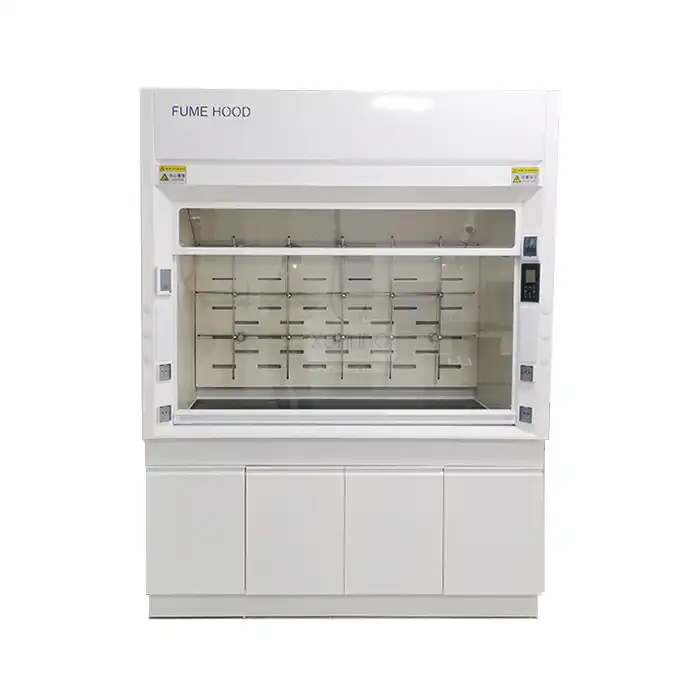
_1743672168871.webp)
_1735393517659.webp)
_1735472430670.webp)
